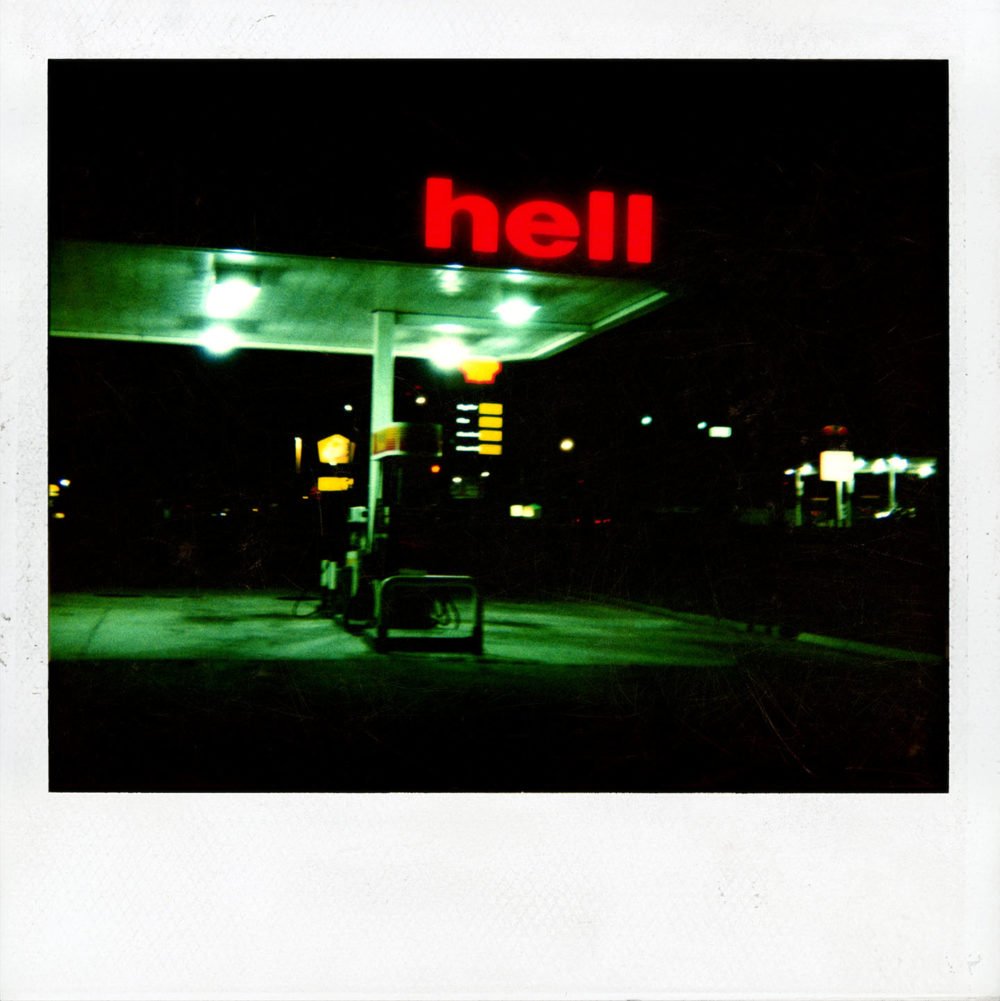- Source: Mousse Magazine
- Author: Allan Gardner
- Date: ESSAYS: Mousse 69
- Format: Digital
Some Day There Will Be Another Love:
Dash Snow
In the decade since the death of U.S. artist Dash Snow, his work has taken on a new language—or at least a new relevancy through the language always present in it.

Dash Snow, “Untitled (Hell),” 2005
Courtesy of the Dash Snow Archive
Snow’s prolific production of works built from the detritus of his life faced criticism both before and after his passing, often hinging on his family’s wealth and decision to reject (at least in part) the kind of life it would afford him. But this is problematic, in that it attempts to contextualize the work solely by exposing the privilege of the artist; such tabloid journalism repackaged for an art world audience is simply not useful. It turns the artist into a character, past which it becomes impossible to see the work. Other critics have taken issue with Snow’s use of loaded imagery but lack of concomitant willingness to show a depth of engagement with the content of those images. Writing for Frieze in 2007, Christy Lange said: “At worst, he is a poseur who makes art based on a naive and superficial understanding of its history and context… Still, I don’t hate Snow’s work as much as I thought I would.”1 A key problem here is the implication that Snow’s work is unimportant because it doesn’t seek to interrogate the figures represented within it—that it maintains a “superficial understanding” of itself. Yet this assertion is likewise a fallacy. The figures in the work, like Saddam Hussein and George Bush, are reduced to symbols. The work is not about the men in question, or at least not only about them. Rather it’s about the image communicating authority—an authority that exists against freedom, that wants to force activity into a prescribed sphere. The authority figure as an enemy of the human spirit. So much of what Snow produced feels like a trick question, an intentional act of separation. It challenges critical context via works that, in many ways, don’t conform to critical context. The presupposition of the work as nonconforming was challenged again in criticisms of his gallery showings, labeled tepid in comparison to the stories surrounding the artist. This too is flaccid critique. It’s not useful to decry something for being provocative and then complain when it doesn’t provoke you.
In the press release for 2016’s Hello, this is Dash, Annka Kultys Gallery noted, “Making art by recording his life was a form of both communication and catharsis for Snow. His fears, paranoia, anti-authoritarianism and aversion to power and control led him to reject any form of twenty-first-century communication that permitted surveillance by outside authorities.”2 It goes on to describe Snow’s work as prefiguring Instagram, but I’d disagree. It’s too intimate. In the wake of artists like Snow and Ryan McGinley (much more the children of Larry Clark than Andy Warhol), we’ve seen countless 35mm zines of kids with cocaine and spray paint lacking that intimacy. The bravado in Snow’s work is natural and has an ease that pushes away from notions of curated identity. In the photographs there’s a sense of seeking preservation, of wanting a moment to exist forever. Maybe this is echoed in social media, but if so, it’s in a heavily distorted way. Instagram is more a portfolio than a photo album. These days, privacy is a distant memory and the proliferation of personal images has led to a lack, not an overabundance, of any sense of real intimacy.
The late Glenn O’Brien said: “There isn’t one masterpiece by Dash… Besides, I don’t believe in masterpieces anyway; they’re about marketing and the market.”3 This pertains directly to the criticism the work has received. There isn’t a particular work to which everyone can refer; there is no singular summary of his practice. Part of what makes it valuable is the way in which certain pieces speak to particular individuals. The challenge of writing critically about Snow’s work is that it necessitates a reducing of critical distance. It requires that the critic accept this sharing of intimacy in the same way Snow did in producing it—he put himself out there to be judged, without hiding behind academic rigor. Art’s language in 2019 could learn from artists like Snow, and his shedding of pretense in favor of the intimate or romantic. The work was personal, and continues to be personal for each viewer. The consensus comes in sharing. A work which embodies my relationship to Dash Snow is “Untitled (Hell)” (2005). It makes me excited, nostalgic, and envious. The idea of stumbling across this sign on a road trip with your friends as a moment of drunken revelation is something I envy because those perfect moments are what make life beautiful. There’s purity in that, which has become unfashionable in contemporary art, impossible to re-create in the current critical landscape. Snow makes me want to talk less and make more, spend more time with people I care about and take more pictures. In saying this, there is risk. Criticality is eschewed in favor of intimacy; we give a piece of ourselves to form that relationship.
Special thanks to Dan Colen, The Dash Snow Archive, Gagosian, and Annka Kultys.
[1] Christy Lange, “Dash Snow,” Frieze, September 12, 2007, https://frieze.com/article/dash-snow.
[2] Press release for Hello, This Is Dash, Annka Kultys Gallery, London, 2016, http://www.annkakultys.com/exhibitions/dash-snow/.
[3] Glenn O’Brien, “I Don’t Believe in Masterpieces Anyway: Glenn O’Brien (1947–2017) on Dash Snow (1981–2009),” HauserWirth.com, March 22, 2019, https://www.hauserwirth.com/stories/24104-dont-believe-masterpieces-anyway.

